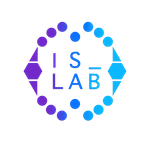I. Kavakiotis, A. Xochelli, A. Agathangelidis, G. Tsoumakas, N. Maglaveras, K. Stamatopoulos, A. Hadzidimitriou, I. Vlahavas, I. Chouvarda (2016) Integrating Multiple Immunogenetic Data Sources For Feature Extraction and Mining Mutation Patterns: The Case of Chronic Lymphocytic Leukemia Shared Mutations BMC Bioinformatics 17 (5), 375
Author(s): Kavakiotis, I., Xochelli, A., Agathangelidis, A., Tsoumakas, G., Maglaveras, N., Stamatopoulos, K., Hadzidimitriou, A., Vlahavas, I., Chouvarda, I.
Appeared In: BMC Bioinformatics 17 (5), 375
Keywords: Data integration, Feature extraction, List aggregation, Mutation patterns, somatic hypermutation, SHM, Chronic lymphocytic leukaemia, CLL
Tags:
Abstract: Background Somatic Hypermutation (SHM) refers to the introduction of mutations within rearranged V(D)J genes, a process that increases the diversity of Immunoglobulins (IGs). The analysis of SHM has offered critical insight into the physiology and pathology of B cells, leading to strong prognostication markers for clinical outcome in chronic lymphocytic leukaemia (CLL), the most frequent adult B-cell malignancy. In this paper we present a methodology for integrating multiple immunogenetic and clinocobiological data sources in order to extract features and create high quality datasets for SHM analysis in IG receptors of CLL patients. This dataset is used as the basis for a higher level integration procedure, inspired form social choice theory. This is applied in the Towards Analysis, our attempt to investigate the potential ontogenetic transformation of genes belonging to specific stereotyped CLL subsets towards other genes or gene families, through SHM. Results The data integration process, followed by feature extraction, resulted in the generation of a dataset containing information about mutations occurring through SHM. The Towards analysis performed on the integrated dataset applying voting techniques, revealed the distinct behaviour of subset #201 compared to other subsets, as regards SHM related movements among gene clans, both in allele-conserved and non-conserved gene areas. With respect to movement between genes, a high percentage movement towards pseudo genes was found in all CLL subsets. Conclusions This data integration and feature extraction process can set the basis for exploratory analysis or a fully automated computational data mining approach on many as yet unanswered, clinically relevant biological questions.
